Q
What is the break-in period for a 2025 Honda Civic?
For the 2025 Honda Civic, the recommended break - in period is the first 1,000 kilometers. During this time, avoid hard acceleration, sudden braking, and prolonged driving at a constant RPM to ensure proper run - in of critical components like the engine and transmission. The manufacturer recommends keeping speeds under 100km/h and RPMs below 4,000. It is advisable for Malaysian owners to shorten the first oil change interval to 500 - 800 kilometers. This effectively helps remove metal particles generated during initial run - in. After the break - in period, you can gradually increase driving intensity, but it is still recommended to maintain gentle driving habits within the first 5,000 kilometers. While modern automotive manufacturing has improved significantly, proper break - in still extends engine life and optimizes fuel efficiency. Owners should regularly check tire pressure, oil levels, and coolant status – these details are crucial for your new car's performance.
Special Disclaimer: This content is published by users and does not represent the views or position of PCauto.
Related Q&A
Q
What does a 2025 Honda Civic cost?
Honda hasn't officially announced the specific pricing for the 2025 Civic in Malaysia just yet. But looking at the 2024 model's range – which sat around RM140k to RM160k depending on trim and spec – we're expecting the 2025 Civic to stay pretty close to that ballpark. Of course, we’ll have to wait for Honda Malaysia to drop the official numbers.
The Civic’s a total legend for Honda, right? Malaysians love it for its solid reliability, fuel-sipping nature, and sporty looks. For 2025, we’re betting it’ll carry over that peppy 1.5L turbo engine paired with a CVT gearbox. You can also expect the Honda Sensing safety suite to make an appearance, along with other tech goodies.
In the local market, the Civic goes head-to-head with fellow Japanese contenders like the Toyota Corolla Altis and Mazda 3. If you’re in the market, it’s worth checking out the warranty packages and after-sales support each brand offers – that can make a big difference down the line.
Thinking of financing? It’s smart to shop around for car loan rates at local banks first. They usually hover between 2.5% and 3.5%. Once the new Civic hits showrooms, do yourself a favor and book a test drive at an authorized dealer. There’s no substitute for feeling how it handles on the road. And keep an eye out for any launch promotions – some dealers might throw in free servicing or discounts on accessories to sweeten the deal.
Q
What colors will the 2025 Civic come in?
The 2025 Honda Civic is set to hit Malaysian shores with a solid mix of classic and trendy exterior color options. Expect mainstays like Pearl White, Crystal Black, Lunar Silver Metallic, and Passion Red – colors that never really go out of style. But here's the kicker: there might also be some fresh additions to spice things up, think something like a Deep Ocean Blue or a Matte Gray, which should resonate well with younger buyers looking to make a bit more of a statement with their ride.
What’s cool is Honda isn’t just about looks here. These paints are all water-based, so they’re easier on the environment. Plus, they’re built to handle Malaysia’s tough tropical weather – you know, the blistering heat and those sudden downpours. They should hold up pretty well against the elements.
Now, picking a color isn’t just about what catches your eye first. It’s practical too. Light-colored cars? They’re total lifesavers when it comes to hiding dirt, and they definitely stay cooler under the sun compared to darker shades. Speaking of dark colors, if you go that route, be prepared to wash your Civic a bit more often to keep that rich, glossy finish looking sharp.
Malaysian drivers might also want to factor in local road conditions. Brighter colors can boost visibility, which is a plus in busy city traffic. And if you’re worried about those inevitable stone chips on the highway, the metallic paint finishes tend to be a bit more resilient in hiding those minor scratches.
For the full, official lowdown on exactly which colors will be available for each trim level, your best bet is to keep an eye on Honda Malaysia’s website for their upcoming announcements. That’s where you’ll get the most accurate info straight from the source.
Q
How far can a 2025 Honda Civic go on a full tank of gas?
The 2025 Honda Civic's full-tank range hinges mostly on its fuel tank capacity and real-world fuel efficiency. Based on data from previous models, we're looking at a tank size around 47 liters. Crunching the numbers with a combined fuel consumption of 6.5L/100km, you're looking at roughly 720 km on a single fill. But let's be real, actual range varies—your driving style, the roads you take, and even how much you blast the AC all play a part.
Hit the highway, and that fuel economy could dip to around 5.8L/100km, pushing your range up to a solid 800 km. But crawl through stop-and-go city traffic? Expect that number to climb to about 7.5L/100km, bringing range down to roughly 620 km. For our Malaysian friends, that constant AC use in the hot weather can hike fuel consumption by 10-15%. Pro tip: Keep those tires properly inflated and stay on top of engine maintenance to keep things running efficiently.
Also, definitely check out Honda Malaysia's official site for localized test data—different Civic trims, like the 1.5T or hybrid, will have different range stories. The hybrid, in particular, really shines in those stop-start city situations.
Q
How to fuel a Honda Civic 2025?
When fueling up your 2025 Honda Civic, first ensure to use RON 95 or RON 97 unleaded petrol (standard in Malaysia). The fuel filler is on the left rear side of the car, turn off the engine and press the fuel - filler cap to open it. Take care to align the nozzle properly when inserting to prevent spills. To protect the fuel pump, we recommend refueling when the gauge hits the 1/4 mark. Also, regular use of Honda's factory fuel additive will help clean carbon deposits. With Malaysia's hot weather, avoid running the fuel tank completely empty – that avoids vapor lock issues in the fuel system when temperatures soar. If you choose the hybrid model, note that the fuel tank might be slightly smaller than the pure gasoline - powered version, but the combined driving range is generally more favorable. Remember, higher - octane fuel (RON 97) mainly improves the engine's anti - knock performance – it is more suitable for high - compression engines, but RON 95 is adequate for daily use. Additionally, make sure to have your fuel filter inspected during regular servicing to help maintain optimal fuel efficiency.
Q
How often does a 2025 Honda Civic need an oil change?
For the 2025 Honda Civic in Malaysia, the recommended oil change interval is typically every 10,000 kilometers or 12 months, whichever comes first. You should always check your owner's manual for the specific maintenance schedule – this guideline is based on Honda's Earth Dreams engine tech and the performance of full synthetic oils. However, Malaysia's tropical climate can speed up oil degradation. So, if you're mostly doing short trips, lots of idling, or driving the car under high - stress conditions (like frequent hill climbs or carrying heavy loads), it's a good idea to check the oil condition at the 8,000 - kilometer point and consider changing it earlier if needed. Most modern cars have an oil life monitoring system that'll display a maintenance reminder on the dashboard when service is due, but it's smart to keep track of your mileage manually too, don't just rely on the reminder. One important note: the first oil change (around 1,000 kilometers) is crucial to flush out any metal debris from the engine break - in period, so don't skip that early service. When you take it to an authorized Honda service center in Malaysia, they'll use the factory - recommended 0W - 20 or 5W - 30 full synthetic oil. The viscosity choice is specifically designed to handle the local hot and humid conditions, so adhere to that recommendation. Regular oil changes aren't just about protecting the engine – they also help maintain fuel efficiency. Neglecting maintenance could even affect your warranty coverage, so it's not advisable to neglect. A useful tip: use the MyHonda mobile app to book your service appointments; it's convenient and ensures you keep a complete record of all maintenance done on your Civic.
Q
Do 2025 Civics have VTEC?
The 2025 Honda Civic does retain VTEC technology on some higher trim models, but it's mainly applied to the intake side of the 1.5T turbocharged engine. That's a bit different from the traditional high-revving VTEC systems familiar to the Malaysian market. This new VTEC setup focuses more on boosting fuel efficiency and low-end torque. When paired with Earth Dreams technology, it cranks out 197 horsepower while still keeping fuel consumption in check.
It's worth noting that Honda has been using different powertrain strategies across markets lately. For example, Southeast Asia might stick with the 1.5L naturally aspirated engine with i-VTEC, while Europe is all about the e:HEV hybrid system. For Malaysian buyers, VTEC is still a big part of Honda's tech identity, but the driving feel has shifted from that old-school "high-rev punch" to a more well-rounded power delivery.
My advice? Definitely take it for a test drive before you buy to get a real feel for it. Also, keep an eye on the detailed specs your local dealer releases—Civic configurations can vary from region to region.
Q
Is the 2025 Civic faster than the 2024?
Wondering if the 2025 Honda Civic is quicker than the 2024 model? Well, Honda hasn’t dropped the official performance specs for the 2025 Civic just yet, so we can’t do a direct head-to-head on speed. But, looking at Honda’s typical update playbook, new models usually get tweaks to the powertrain or tuning – stuff like a bit more engine oomph or snappier transmission response – which could translate to small performance gains. If you’re a Malaysian car shopper with your eye on this, keep an eye out for Honda’s official release of the full details.
It’s also worth remembering that straight-line speed isn’t just about what’s under the hood. Curb weight, aerodynamics, and even tire performance all play a role. So, you’ll want to dig into the full tech specs to really get a sense of how it stacks up. For Malaysian buyers, beyond just raw speed, think about how the car handles local road conditions and fuel quality too – you need something that fits your daily drive. And if you want the real deal, once the 2025 hits showrooms, swing by your local authorized dealer for a test drive. Nothing beats getting behind the wheel to feel the difference for yourself.
Q
Is the Honda Civic 2025 a sedan or hatchback?
The 2025 Honda Civic hits the Malaysian market offering both four-door sedan and five-door hatchback body styles, letting buyers pick what suits their vibe. The sedan sticks with that classic three-box design, with a trunk that flows seamlessly from the cabin – perfect for families who dig that traditional look and need extra luggage space. On the flip side, the hatchback rocks a sloped tailgate and shorter rear overhang, serving up more flexible cargo room and a sportier stance that’s definitely turning heads among younger drivers. Both get the 1.5-liter VTEC turbo engine, though the hatchback usually gets a slightly sportier tune to match its personality. Cool thing is, Civics here are locally assembled (CKD), so you’re getting that global Honda quality without the sky-high price tag. No matter which body style you go for, you’re not missing out on the standard Honda SENSING suite – adaptive cruise, lane keep assist, all that good stuff is included. My advice? Test drive both to see which fits your daily grind. The sedan’s your buddy for long highway stretches, while the hatchback makes zipping through city traffic and squeezing into tight parking spots way easier.
Q
Is the 2025 Civic Manual?
Honda hasn't officially spilled the beans on the exact specs for the 2025 Civic in Malaysia just yet. But, looking at global trends and how the current Civic is kitted out, it's probably a long shot that the 2025 model will keep the manual transmission option here. Why? Well, the world's pretty much shifting towards automatics these days – especially CVTs and hybrid setups – and let's be real, Malaysian drivers generally prioritize ease of use over rowing their own gears. Of course, we’ll have to wait for Honda Malaysia’s official word to be sure.
If you’re a die-hard enthusiast craving that stick-shift thrill, keep an eye on the Civic Type R. Honda usually keeps a 6-speed manual in that high-performance bad boy for other markets. Just be aware that if it does come here, the price tag and how easy it is to get your hands on one might be a whole different story.
On a side note, a lot of brands are phasing out manuals lately. Blame it on stricter emissions regulations and the whole push towards autonomous driving tech. So, if you’ve got your heart set on a manual, my advice? Hit up your local dealer ASAP to check stock, or maybe explore parallel import options. And hey, don’t sleep on other models that still offer a stick – think Mazda 3 or the Toyota GR lineup, for example.
Q
Is the 2025 Civic only hybrid?
As for whether the 2025 Honda Civic will only be offered as a hybrid in Malaysia, there's still no official word on the exact specs for our market. But looking at global trends, the Civic lineup is definitely doubling down on hybrid models. Take other markets, for example – they've already got the e:HEV hybrid variant, pairing a 2.0L Atkinson-cycle engine with a dual-motor setup that balances fuel efficiency and performance pretty nicely.
Malaysian buyers should keep an eye on Honda Malaysia's official website or check with local dealers for updates. Market demand often shapes model configurations, so there's a good chance the traditional petrol versions might stick around – especially since the 1.5T turbo engine is pretty popular here.
Hybrid tech has been catching on more in Malaysia lately, and it makes sense for city driving. The electric motor assist really helps cut fuel use in stop-and-go traffic. On the flip side, regular petrol cars still have the edge when it comes to maintenance costs and long-distance range.
Before making a decision, it’s worth weighing your actual needs: things like annual mileage and how easy (or not) charging might be. Also, don’t forget to look into the Malaysian government’s tax incentives for new energy vehicles – that could swing your choice one way or the other.
Latest Q&A
Q
How much is a Toyota Corolla Cross hybrid?
The Toyota Corolla Cross Hybrid currently starts at around RM137,000 in Malaysia, with prices varying depending on the trim level and specifications. For instance, the 1.8L Hybrid variant can get pricier when equipped with premium features like a panoramic sunroof and power tailgate.
Under the hood, it’s packing Toyota’s tried-and-tested hybrid system, pairing a 1.8L petrol engine with an electric motor. This setup delivers a smooth driving experience and impressive fuel efficiency – Toyota claims around 4.3 liters per 100 km, which is perfect for Malaysia’s stop-start city traffic.
As a compact SUV, the Corolla Cross Hybrid offers decent space, with a boot that’s more than enough for everyday family use. It also comes standard with Toyota Safety Sense (TSS), featuring handy tech like pre-collision warning and lane-keeping assist, so you’re covered when it comes to safety.
One big plus? Hybrid models in Malaysia qualify for government tax exemptions, which helps bring down the initial purchase cost. And in the long run, you’ll save big on fuel too. If you’re all about value and eco-friendliness, this one’s definitely worth a look.
Q
How to open the hood of Toyota Corolla Cross?
To pop the hood of a Toyota Corolla Cross, start by locating the hood release lever down by the driver's left foot, usually near the pedals. Give it a pull, and you'll hear a faint click as the hood pops open slightly. Then head to the front of the car, reach into the gap at the center of the hood's leading edge, and find the secondary safety catch—it's typically a small lever or button. Gently lift or press that while raising the hood; if it feels a bit heavy, use the prop rod to hold it open.
Now, as one of Toyota's key SUV players in Malaysia, the Corolla Cross's hood is designed to balance lightness with safety. When you're checking oil, coolant, or the battery, it's smart to do it when the engine's cold to avoid any accidental burns. Also, make sure to keep the hood latch mechanism lubricated every now and then so it opens and closes smoothly. With Malaysia's hot and rainy weather, the engine bay can get pretty toasty after a long drive—best to wait 10-15 minutes before popping the hood to keep both you and the car safe.
Q
How to open the gas tank of Toyota Corolla Cross?
To open the fuel tank cap on a Toyota Corolla Cross, first make sure the vehicle is switched off. Then, locate the fuel door release lever near the driver's left floorboard—give it a gentle pull to unlock the fuel door. After that, just press the outer side of the fuel door and it'll pop open. A quick heads-up: some models might feature a capless fuel system, where you can simply insert the fuel nozzle right in—super convenient stuff.
Living with Malaysia's hot and rainy weather, it’s smart to regularly check the fuel cap’s seal to keep rainwater or dust from getting into the tank, which could mess with engine performance. Also, Corolla Cross models from different years might have slight variations in how you open the fuel door. If you run into any issues, your owner’s manual or a Toyota authorized service center should have the answers.
For those who often hit the highway, knowing the tank capacity (around 47-50 liters) and recommended fuel type (RON 95 is the way to go) is key. It helps you plan refuel stops better and keeps the engine running in top shape.
Q
How many cylinders in Toyota Corolla Cross?
In the Malaysian market, the Toyota Corolla Cross gasoline variant comes equipped with a 1.8-liter 2ZR-FE naturally aspirated engine, featuring an inline-four cylinder layout. The hybrid version, on the other hand, pairs a 1.8-liter 2ZR-FXE Atkinson-cycle four-cylinder engine with an electric motor. So whether you opt for the conventional petrol or hybrid setup, this SUV sticks with a four-cylinder configuration.
For Malaysian buyers, four-cylinder engines strike a solid balance between smoothness and fuel efficiency, making them ideal for both urban commutes and long-distance drives here. It's worth noting that four-cylinders are the go-to choice in the compact SUV segment – they vibrate less than three-cylinder units, offer better fuel economy than six-cylinders, and come with lower maintenance costs. That's part of why the Corolla Cross maintains such a strong reputation for reliability.
If you're focused on performance, the 1.8-liter petrol model delivers 138 horsepower and 172 Nm of torque. The hybrid version, meanwhile, has a combined system output of 122 horsepower, with the electric motor's instant torque giving it an edge off the line. Given Malaysia's hot climate, it's advisable to regularly check the cooling system and engine oil condition to keep that four-cylinder running strong. Plus, Toyota's 5-year unlimited mileage warranty provides extra peace of mind for owners.
Q
How to replace the battery of key of Toyota Corolla Cross?
Here's how to swap out the battery in your Toyota Corolla Cross key fob: First off, grab a CR2032 coin battery – that's the standard type for most Toyota keys, and you can pick one up easy enough at convenience stores or electronics shops around Malaysia. Next, take a small screwdriver or even a coin, stick it into the little groove on the side of the key, and give it a gentle twist to pop open the case. Carefully remove the old battery, making sure to note which way the positive (+) and negative (-) sides are facing. When popping in the new battery, double-check that the positive side is facing up. Snap the case back together and test the key to make sure everything works like normal.
It's a good idea to replace the battery every 2-3 years as a general rule. If it still doesn't work after swapping the battery, there might be an issue with the key's circuitry – best to head to an authorized Toyota service center to get it checked out. Day-to-day, try not to leave the key sitting in really hot or humid spots for ages, since that can drain the battery faster. For models with the smart key system, you might need to resync the key after changing the battery – just flip through your owner's manual for the exact steps on that. With Malaysia's hot weather, giving your key battery a regular once-over is a smart move to avoid that annoying "dead key" moment when you least expect it.
View MoreRelated News
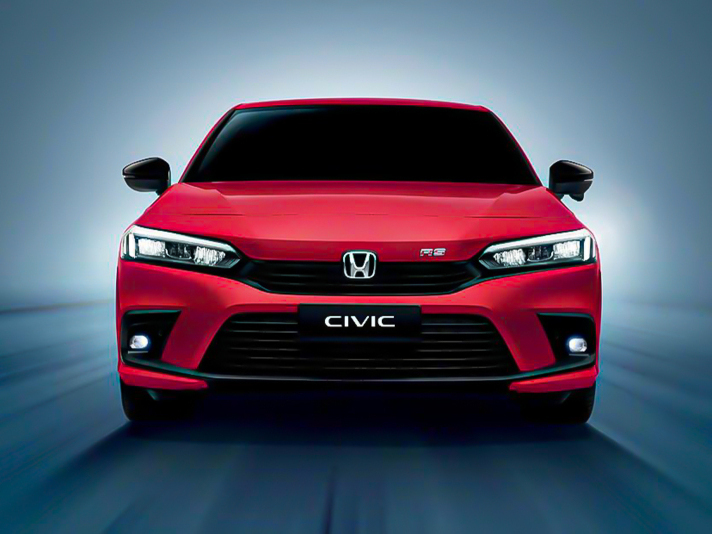
Honda Civic Interior Revealed: A Comprehensive Analysis of Civic’s Interior Charm
Kevin WongJul 10, 2025
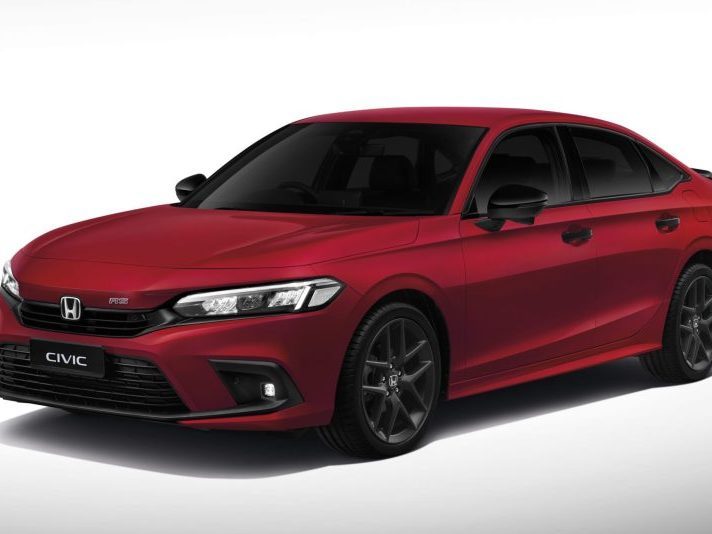
Honda Civic Price Revealed: The Most Detailed Buying Guide!
AshleyApr 8, 2025
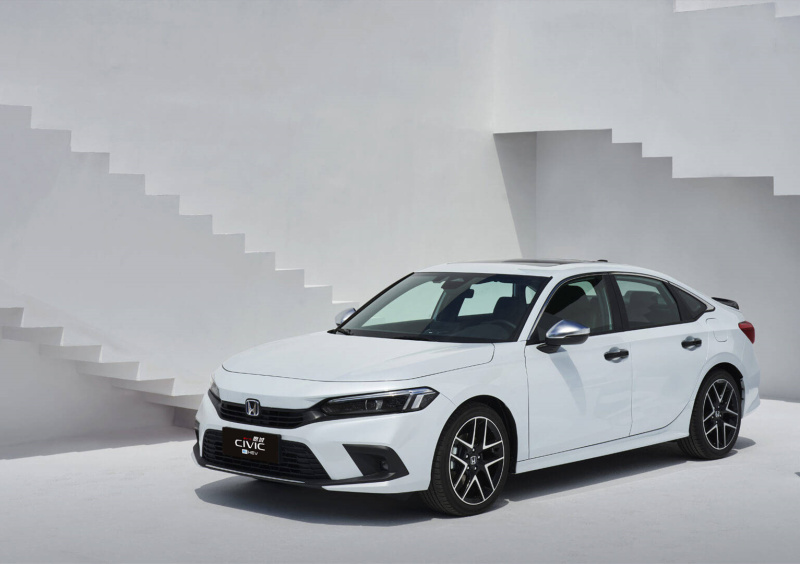
Whether it's about appearance or handling, why do young people all like Honda Civic?
WilliamSep 24, 2024
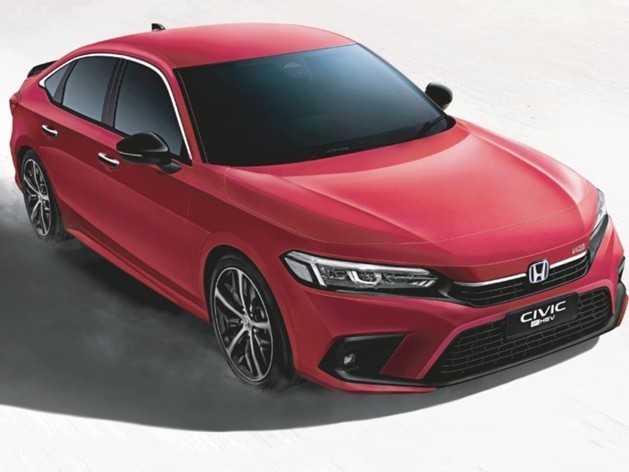
2022 Honda Civic: Hybrid car with the fastest acceleration, lowest fuel consumption, who says eco-friendly cannot be fast
JohnSep 3, 2024
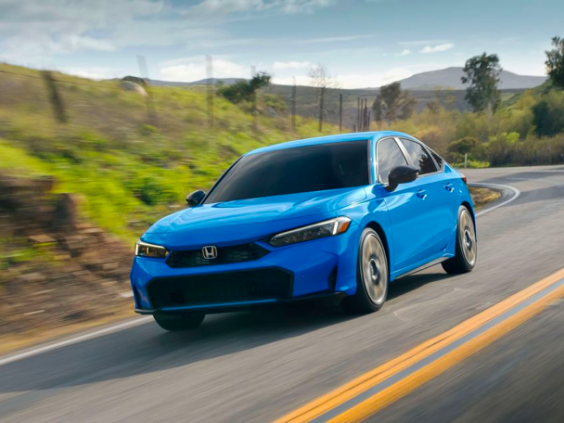
2025 Honda Civic debuts, minor changes in appearance, has 1.5 Turbo model been discontinued?
LienMay 22, 2024
View More












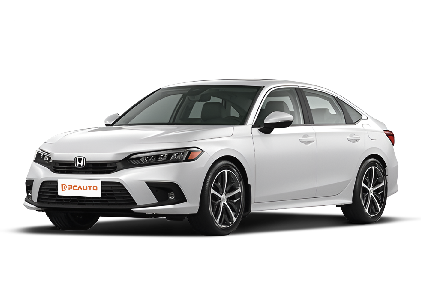
 Cars
Cars




Pros
Cons